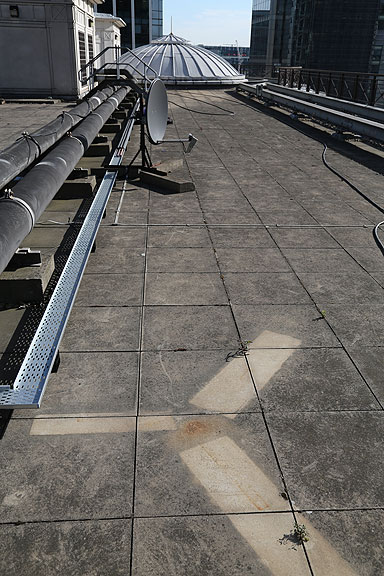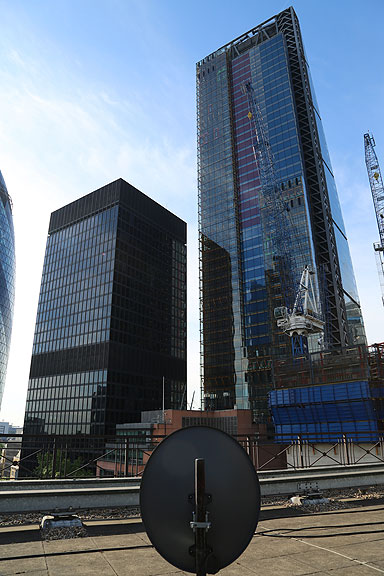New Building Blocks Satellite Reception
We were called into a client in Bishopsgate, London who had lost satellite reception on all his screens. Another company that had already been called out by the Landlord to investigate the signal loss had concluded a new building that had been built opposite was blocking the satellite signal and there was no alternative position for the dish.
Some technical information:
Satellite signals travel in straight lines and the satellites put out the equivalent of a 60watt light bulb from 23,000miles away. Therefore signals won’t go through any objects and even clouds and rain affect signals; so if a building is in the way this is usually the end of satellite reception.
We asked if we could test for ourselves as we were on site and we like a challenge.
We attached a high-powered laser pointer to the dish and this allowed us to see where on the offending building the signal was hitting. We then moved the dish along the roof until the laser pointer was pointing between the offending building and the next (see picture).
We only needed to move the dish about 6 metres and we had a signal back.
As it was a Landlord’s system we weren’t allowed to relocate the dish so we fed this information back to the Landlord who said his satellite installer would relocate the dish – or so we thought.
A few days later we received a call asking us if we really did receive a signal as the Landlord’s suppliers had said it would only give a few channels and these would drop out. This simply isn’t true – if the offending building doesn’t move and you have a gap between buildings larger than the dish size you are using (90cm gap for a 90cm dish) the signal will continue to come through.
In the end the Landlord called us in to move the dish and 18 months later they still have no problem watching satellite TV.
In the 30 years we have been installing dishes we have found solutions for over 99% of these types of situations. The dish location may need to be unconventional e.g putting a dish on a building next door or at street level rather than on the roof but let us at least try.
The first picture below shows a cross where the original dish was and the second picture shows the dish looking through the gap in the buildings


